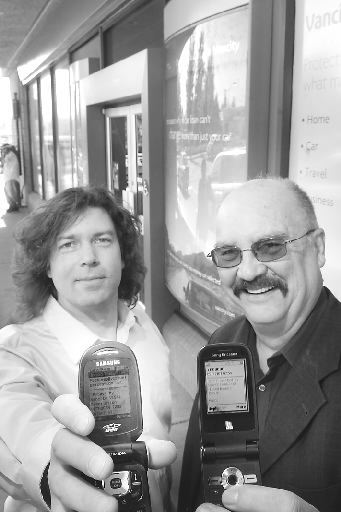CLAUDINE BEAUMONT
Sun

Analysts, bloggers and venture capitalists are always on the lookout for the next Google, YouTube or Facebook, and one of their prime hunting grounds is California’s annual future- tech jamboree, TechCrunch. It’s the brainchild of Michael Arrington — blogger, technology evangelist, and serial entrepreneur — and Jason Calacanis, a self- styled “ entrepreneur in action” and venture capitalist. Start- up companies submit plans of their venture to the TechCrunch panel, who invite a few to showcase their products. Exhibitors gain publicity and exposure, as well as having the chance to talk to investors.
If this year’s TechCrunch was anything to go by, it seems to be boomtime again in the dot- com industry after the lean years that followed the first dot- com crash in 2001. The conference panel received so many “ great applications” from new companies that they doubled the number of exhibitors from 20 to 40.
The revitalized fortunes of Internet companies are due in part to the endless appetite for all things “ Web 2.0”, the term for the next generation of technologies that utilize social- networking, peer- topeer sharing tools, and user- generated content. Even respected technology blogger Tim O’Reilly called Web 2.0 a “ business revolution in the industry”.
Judging by some of the start- ups on show at TechCrunch earlier this month, the panel agrees. Web 2.0- based initiatives dominated proceedings, and some of the ideas were so innovative that you could almost smell the money that will be thrown in their direction.
Mint ( mint. com), which scooped the $ 50,000 US prize, is the perfect example. It’s a browser- based personal finance application that allows users to track their bank accounts, credit cards, and other spending in one place. Similar banking tools have existed before, but it’s the aplomb with which Mint does it that marks it out. It can alert you to upcoming bills, unusual transactions and low balances; it will also suggest alternative deals that could get you a better rate of interest.
Flock ( flock. com) is a social web browser which aggregates all your socialnetworking information into a single window, while doubling as a conventional browser. It will pull your friends’ Facebook profiles into a sidebar, allow you to share content between blogs or websites, and alert you when friends have updated their entries on Flickr, PhotoBucket, Facebook, etc.
TripIt ( tripit. com) has the potential to be the next big thing. If you’ve ever organized a holiday with friends, you will understand only too well the mountain of information you generate; the e- mails, itineraries, and alternative suggestions for flights or accommodation. TripIt is a travel info- dump: set up an account, email all your travel plans and confirmations to the dedicated address, and it will help you to build and manage an itinerary that can be edited and accessed by multiple travellers. It even embeds Google Maps of where you’re going, Wikipedia entries on cities and sights, and airplane seat advice from SeatGuru. I’ve been using the test version for a couple of weeks, and can honestly say I will never plan a trip without it again.
Orgoo ( orgoo. com) is also in beta, but it promises to integrate all your instant- messaging, video- conferencing, text messaging and e- mail into a single portal, or, as they put it, “ communication cockpit”.




